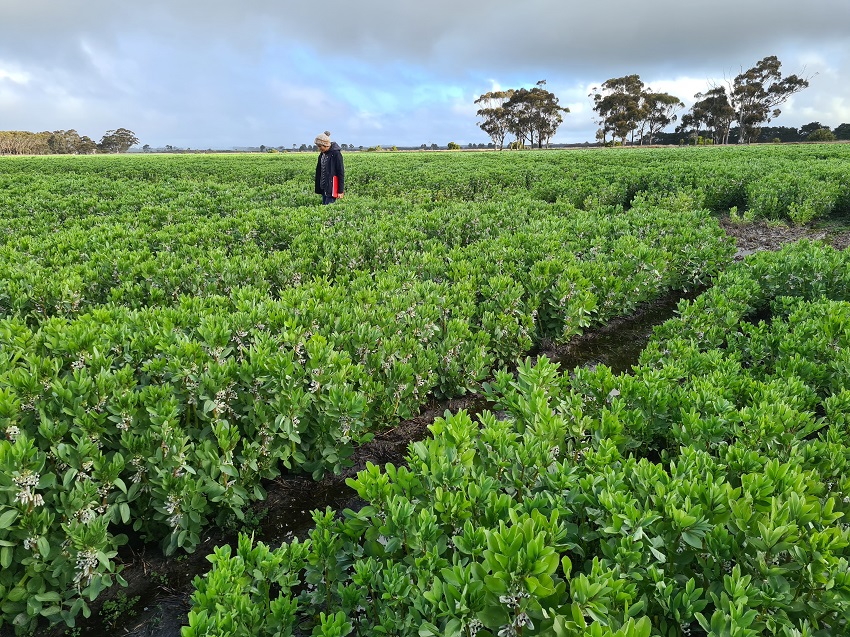
A team of enthusiastic early-career research agronomists has worked with industry to provide a comprehensive guide to growing faba beans.
The Department of Primary Industries and Regional Development (DPIRD) released the ‘Growing Faba Beans on the south coast of Western Australia’ guide today, in time to celebrate World Pulse Day.
DPIRD’s regional agronomy team developed the guide to address increasing interest in faba beans as a rotational break crop, particularly on the South Coast.
DPIRD Dryland Farming systems manager Vanessa Stewart said the team compiled 15 case studies on the experiences and learnings of current faba bean growers across the South Coast region, from Kojonup in the west, north to Dumbleyung and across to Beaumont in the east.
“Many growers had limited or no experience with the legumes and were looking for tips on how to grow a successful crop so this publication will help to fill that knowledge gap,” she said.
“The online and hard copy guide was developed under the ‘Building crop protection and crop production agronomy R&D capacity in regional Western Australia’ project supported by DPIRD and Grains Research and Development Corporation (GRDC) co-investment.”
Esperance based senior research scientist Mark Seymour said faba beans were a particularly good fit for growers on the South Coast looking for a legume break crop that fits into both cropping and mixed farming systems.
“Faba beans can be dry sown early to depth to chase moisture, they tolerate waterlogging better than other grain legumes and can be sown and harvested using existing machinery and equipment used for cereals,” he said.
“The legume fixes nitrogen for itself and subsequent crops and has a higher yield potential than other pulses.”
The project is just one of a number undertaken in partnership with the pulse industry, featured as part of World Pulse Day.
The research team has just concluded a three-year GRDC co-investment high-value pulse project.
“We’ve been looking into new varieties of a range of pulses, including chickpea, faba bean and lentil and designing experiments to highlight their strengths and weaknesses, including trialling early disease intervention,” Mr Seymour said.
“The department is also involved in managing experiments for eastern states breeders and industry to help develop new pulse varieties for WA growers.
“We are determining whether the new varieties coming through now are better than what we already have.”
A new department project with coinvestment from GRDC will focus on developing more acid tolerant lentils, as most lentils are currently grown in the Esperance area on alkaline soil.
Another new GRDC project about to get underway in partnership with the Grower Group Alliance is working with grower groups to help demonstrate the best practice agronomy of grain legumes in their respective regions.
‘Growing Faba Beans on the south coast of Western Australia’ can be downloaded for free from the regional research agronomy project page on the www.agric.wa.gov.au website or requested from DPIRD offices.
Image caption: DPIRD research scientist King Yin Lui inspects a crop of faba beans.
Media contacts:
Megan Broad/Donna Coleman, media liaison +61 (0)8 9368 3937


